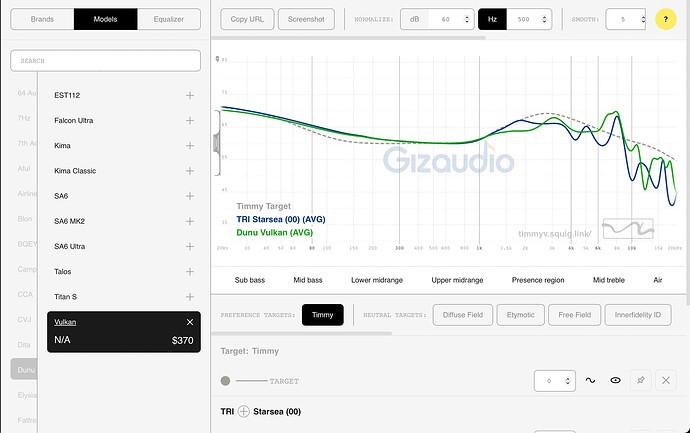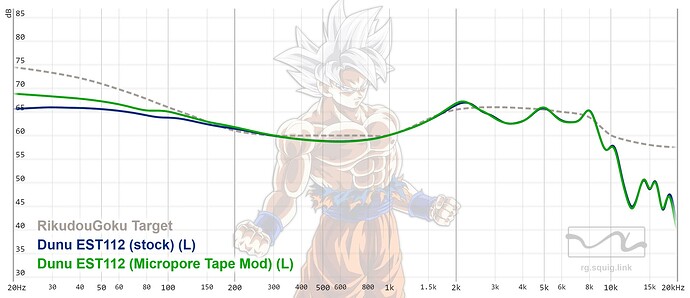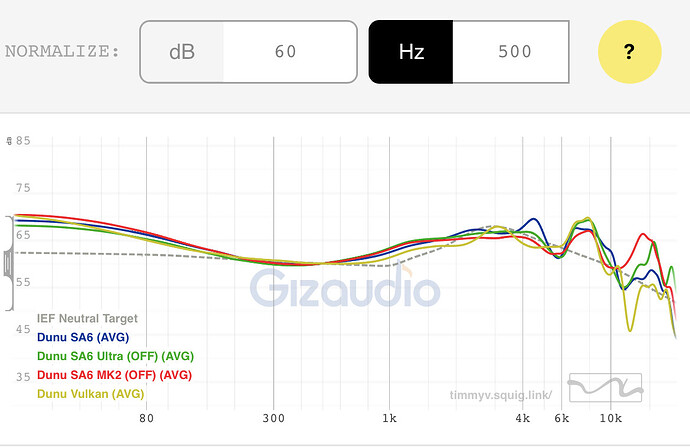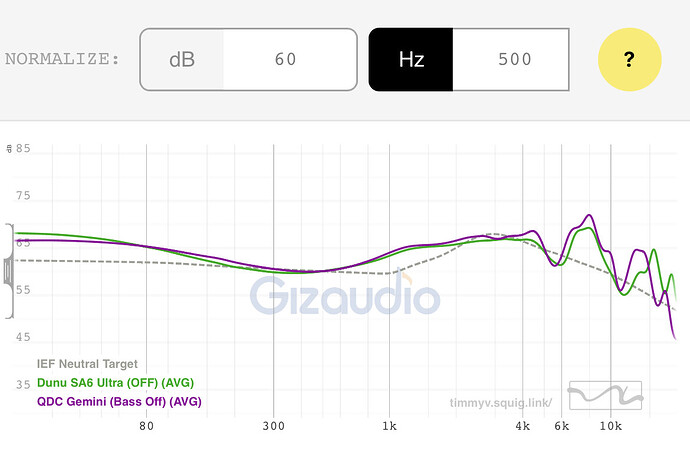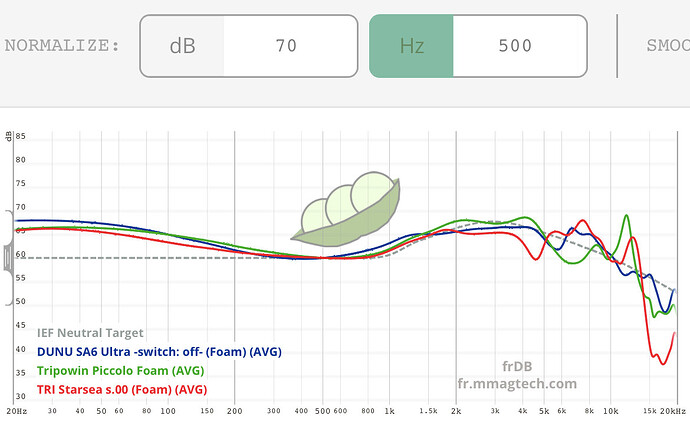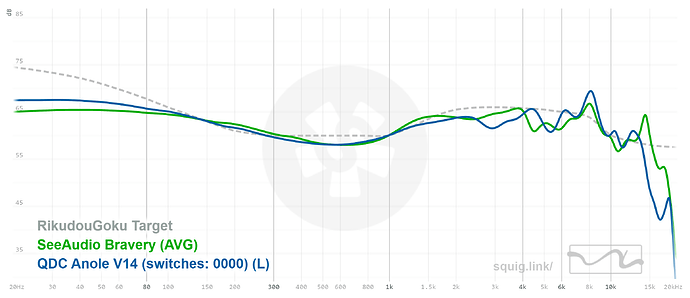whoopsie doodle
LOL you love what you love, big dog!
Speaking of:
DUNU Vulkan or How The Entire Audiophile Community Failed Itself
So thanks to the immense kindness of @sonofholhorse and the rest of my audio tour group, I’ve gotten to answer the single longest lingering question I’ve had of my journey into the IEM game; What would I do if I finally got to listen to the IEM that had been living in my head rent-free for over a year? Now I’ve answered that question for myself and I get to answer it for you. So let’s just get to it: Does the Vulkan live up to the hype I’ve built up in my own head and is the rent finally due?!
Songs to Listen to and Follow Along:
As usual, I’m going to write my thoughts in generalities, but I’ll give you a sample of songs that I listen to, that will relate to the concepts I write about. Feel free to ask for specifics, if you don’t keep up with my thought processes.
Playlist
Swashers/Bubbles - Yosi Horikawa (For imaging/detail retrieval (:00-1:00 Swashers), general technicalities check (both), soundstage depth/dynamics/layering/separation (:00-:30 Bubbles))
The Speedwalker (Live at Madison Square Garden) - The Fearless Flyers (For bass elements, particularly sub-bass/mid-bass interplay, drum kits, soundstage/layering)
DISINTER MY HEART - TRAILS (For treble response and resolution, male vocals, midrange response)
When I Fall (Outta Love) - Kevin Olusola (For Imaging/detail retrieval :00-:07, tonality, timbre, male/female vocal interplay)
Fundamental Elements of Madness - Dax Johnson (For soundstage width 1:10-1:26, piano tonality)
Holding On (Rome In Silver Remix) - Dabin (For female vocals, tonality, mid-bass response within mix From 1:12-1:36)
THE SOUND
Never thought you’d make me perspire, never thought I’d do you the same; Never thought I’d fill with desire, never thought I’d feel so ashamed
My Sweet Prince - Placebo
(IEM Tuning Style: QDC-Style)
I’ll cut right to the chase, in terms of the sound, so we can spend some time discussing it. Vulkan is the upgrade to TRI Starsea I knew I needed from the moment I compared the two graphs.
(credit to timmyv.squig.link normalized to 500Hz)
(I may revise some of the following because my Starsea is out for tour and I can’t direct A/B at the moment. Will note if any opinions change) The bass graphs pretty identically and have similar amplitude but I do hear some differences. The Starsea has a bit more of a midbass presence with the sub-bass that is present; it feels like it lingers a little more or has more impact. Vulkan is snappier with a little faster decay. I definitely pin that to the difference between Starsea’s bio-diaphragm DD and Vulkan’s dual DDs that marry a bio DD handling the bass with a titanium DD managing the lower midrange. There’s just an extra note of refinement in the bass-to-mids transition that I give a small nod to the Vulkan on but they are neck-and-neck.
Into the mids, there’s not much to pick apart here. I find both sets to be clean and well detailed, with good warmth and note-weight, but no excessive bleed. If you want the clearest midrange for vocals (something akin to a stock EA500), you won’t get quite that level of sound, but I much prefer this more realistic (to my ear) playback for my EDC. The upper midranges on both are very similar but there are some sticking points for each. Both sets are vocally forward, with a short-porch pinna gain but Vulkan actually peaks earlier (and lower) then adds a 3k bump for emphasis while Starsea peaks just before 2k but plateaus into the treble. I think both styles work (if you’re generally okay with the QDC-style tuning), and don’t really favor one over the other.
The game changes in the treble though, as the two sets take varying approaches in this area. Starsea is tuned to have a bit of a W shape in its treble from 4-9k, where you get some steady peaks and valleys before a small emphasis at 8k for resolution. That can spike for people who are sensitive in the wrong areas, but generally I did not have any problems with that and found it to be a very good tuning at the $110 price level. Vulkan has a plateaued treble from 4k to about 6k and then has a stronger emphasis in the 6-8k region. I am unabashed about my appreciation for boosts in this area for my ear, but even I have to acknowledge there are times it gets too hot there (usually on female vocals, more than instrumentation). You will encounter sharpness and sibilance, and depending on your tolerance levels it could be a non-starter for you to enjoy Vulkan. You have been dutifully warned.
There is something about how a well-done QDC-style tuning presents soundstage just gets me, and both of these sets bring something special to me. Starsea was the first IEM that I ever heard what I would describe as a 3D soundstage, where the width, height, and depth all matched up and gave me something special. It was the first time I ever heard the effect in Fundamental Elements of Madness that it was 3 pianos being played in low-left, center, and upper-right images rather than one piano being played across the image. Vulkan doesn’t reproduce this effect, but it has its own magic: While there isn’t as much height as with Starsea, Vulkan produces a U-shaped amphitheater effect when a song has a proper soundstage. At first I heard it as a narrow soundstage and was going to feel disappointment, but then the amount of depth available hit me and I was blown away. Both sets nail the technicalities to a very satisfactory degree. Both are IEMs that pass my Yosi Horikawa tests (obviously not as well as the best earbuds, but for IEMs I get more of the imaging and separation than in most any set I’ve heard). Vulkan would edge ahead of Starsea but for a rare occurence where it can get a little stuffy sounding in the busiest passages (like in some metal/faster rock).
THE GOOD
- DUNU doing DUNU things with accessories/presentation
- You feel as taken care of as always with the provided cable and accessories
- The shell is as gorgeous as everybody always says, though it’s actually more subtle and muted than is conveyed. I really like that it’s distinct but not gaudy
- Tuning: If you either don’t have SA6 money or don’t like BA bass, this is your off-ramp
- Frankly, I prefer this over SA6 to my taste
- Fit and quality-of-life
- No issues with fit or pressure build-up to report unlike Starsea
- Soundstage: I literally have no IEMs that do quite what this does with its soundstage
- Speedy bass that doesn’t lack weight and tonality (closer to neutral than warm but not lean)
THE BAD
- Tuning: If you don’t prefer QDC-tuning, this is a pass. If you are sensitive to sibilance this is probably a hard-pass
- Proper seal is a little picky but EXTREMELY vital
- poor seal leaves these sounding thin and what I’d imagine is more “Blessing-like”. It’s not ideal playback for me. Deeper fit can help mitigate some of the previously mentioned issues some
- Could do with a little more bass quantity, when coming off of bassier IEMs
- May not be the best set if you listen to busy, highly technical tracks
WHO IS THIS SET FOR?
- People who like closer-to-neutral tunings. Not built as a set that is naturally energetic, there is some room to volume scale (if you’re good with the mid treble boost)
- DD bass fans who want to try the upper-end DUNU tunings, at their entry-level price
- Someone who wants an upgrade that provides a unique playback in terms of soundstage/technicalities
- People who want a (generally at mid-volume) mellow but vocal set that carries body and isn’t too cold/lean
WHO IS THIS SET NOT FOR?
- Anybody who is even remotely anti-sibilance. I would demo this first and absolutely not blind buy
- People who struggle with $400 being “entry-level” to anything
- Someone who values the cleanest technicalities, you do probably have to jump up a little further in price to get the best of the best
- People who don’t deal well with picky ear fitments or don’t have the collection of tips to roll and get it just right
WHAT DOES IT ALL MEAN?
I freaking love this IEM. I don’t think it takes much to figure that out, as effusive as I’ve been. This is an obvious upgrade to Starsea, one of my favorite “affordable” IEMs: It has a subtle difference in the bass replay I like, goes a step further in the treble replay that gives me full clarity and resolution, and has a soundstage performance I don’t really get anywhere else. On top of that, it has quality-of-life upgrades to Starsea that make it the place to go if you can’t get on with Starsea, or want Starsea-but-better.
So why did this IEM just get forgotten? I think we all have a part to play in why Vulkan “failed”. DUNU has done themselves a disservice with this release. When it came out $380 wasn’t a completely unreasonable price-point to give this, as the gatekeeper to the Studio lineup. It’s a big ask, but in that market it makes sense. Since then, the market has moved far beyond and now $380 is just too much to ask for this set. Even its regular sale price of $320 is not good enough to be competitive. Honestly, I could start to see pulling the trigger on Vulkan at a $280 price point (brand-new) but I’d really say I’d love to see this under $250. Unfortunately, DUNU tax is kinda real so you’re not going to see them hit that kind of price point.
The next failure comes from the community just not appreciating this set. It is not NEARLY as technical as the SA6 Ultra I got to hear, and I know that some all-BA sets can surpass this, but considering you have to pay well over $500 to get technical performance that beats this, but usually have to give up something in bass replay to do it, I do not understand how Vulkan doesn’t get the hype it deserves. Aful Performer5 is a simpler recommendation, on budget grounds, but in a straight up A/B for sound quality, I’d be hard-pressed to ever recommend P5 over Vulkan and I wonder if I’d feel the same about a P8 vs. Vulkan comparison.
So I’m going to do something I go out of my way to not do. I’m going to say that if you like this style of tuning, and can handle the mid treble sibilance (either just knowing you can or off of demoing Vulkan), this is an “endgame” set for the mere mortals. If you have NightJar Singularity money, then this does not quite apply. But if your normal budget for an expensive IEM is like mine and you don’t usually go over $200, this is an IEM that can be your big purchase and get-off set. It is my off-ramp for DUNU, the little extra juice I can squeeze out of the SA6 line (or the 10/14 that are upcoming) make no sense for me, when I have Vulkan. If I do dip into the deeper waters of the IEM ocean, I can easily go to a different company with a different tuning philosophy because I’m fully satisfied with Vulkan. So thank you, friends, you got Vulkan out of my head and into my heart! And that’s going to be it for this review. Enjoy your days, and take care till next time!
Rank for DUNU Vulkan: A
Rank With Personal Bias: S
Recommendation Level: Highly Recommended (QDC-Style)
Rank As a Food: Arnold Palmer

You can tape the vent for that. ![]()
Same shell as the EST112 so should have a similar effect with this mod.
Great review, I love my Vulkan they have a great synergy with hiby RS2.
I am suffering from terminology ignorance though what is a QDC sound signature?
I’d like to know for future reference when choosing iems from reviews as I like whatever it is.
Basically, I call QDC-style tuning that based on the fact that QDC (who makes the Anole series, and is represented by Gemini, above) specializes in this kind of tuning.
It’s sub-bass over midbass into a flat lower midrange by 200-300Hz. It usually has a short pinna gain (starting at 600-800Hz usually but budget versions can go to 1kHz), that rises to about 1.5-2k).
They have a plateaued upper midrange generally into a 4-6k dip and generally have a 6-8k emphasis. I take some liberties with applying every principle to sub-$100 budget sets, but you can see (I hear) the DNA in the ones I’m highlighting
Thank you for the very clear explanation. I’ve not heard any of those iems so it’s good to be given sense to the description.
That early ear gain hump around 1k and the flat line across 2k to 5k is the key feature of this tuning, IMHO. It produces a very distinct midrange forward but not shouty presentation. Good for vocal, but not the first choice for orchestral music where space and depth is needed, IMHO. Killing the hump with EQ, and the stage depth would return.
This tuning style seems to be making a come back this year.
I auto eqed a bunch of my iems to that sound signature, the qdc sound signature is colored to moon and back but it has its benefits though.
The cons
1 They have and untextured warm bass tuning
2 The early rise to upper midrange is unnatural, results in bloat in busier tracks
3 The lack of upper midrange doesn’t have the proper 3k extension and everything sounds distant and lacks the sharp bites, for example strings don’t have that natural sharp tone to them, qdc style just smoothes them over. The smoothing here will also hurt busier songs sense of separation and instrument distinction and makes things blend easier compared to a more correct tuned iem.
4unnatural treble, like the sa6 mk2 or ultra have that upper treble but they lack that mid treble, so the treble would sound thin and splashy (airy) without that initial bite that require a stronger mid treble. Some like qdc anole vx or sa6 has good lower to mid treble but they lack the extension . but almost all lack that 5 to 6k lower treble neutralness to avoid sibilance.
The pros
1 Some genres are shouty like Asian pop music, they have so much high frequency synth, effects and female vocalist with high pitched voices that would would benefit greatly by this kind of tuning with muffled toned down upper midrange. i would gladly use this tuning style for asian music ANY day and time.
2 it sounds soft and warm, some people like this and hate that natural grating and sharp sounds of strings, instruments etc… .
- they are not sibilant, most have toned down lower treble like have a huge dip at 5 to 6k area (tsss and ttt sounds) so they will be fatigue free for almost any human being on earth( sa6 mk2 has unnatural boosted upper treble though that keep in mind)
anyone who tried any of these iems irl corrects me if im wrong, because i only used auto eq here.
You nailed a lot of the points about it. I’d add a few points/caveats:
- I personally think this tuning generally benefits male vocals even more than female
- acoustic pieces and simplistic tracks do especially well, as does modern well-produced pop of all kind
- 6-8k can pick up the sibilance where 4-6k gets smoothed out. Any sensitivity there is amplified because that’s the most emphasized part of the treble
- the lower pinna rise allows the lower bass shelf in the late bass past 200Hz but still having that warmer, meatier note weight
- A set like EA500 has more bass past 150Hz but Vulkan has equal-to-better weight because of tuning
agreed with everything you said but not this one, strings without that sharp bite aren’t natural and correct sounding imo.
Well in combination with what you said, if you want that reduced bite/smoothed over sound on your strings it will be a plus. If you want that sharper definition then it’s a no ![]()
The strings sound softer and rounder on this tuning. I was looking for exactly such a FR for tireless and long listening! If the DD is set this way it will be very bad for guitars and other strings, but because of the quality BAs of the SA6 MK2 everything is accurate.
And yes, male vocals are better than female vocals.
There’s something spectacular about the performance of this kind of tuning, but it’s definitely not for everyone. If you want sharper strings for metal–> FH7 or IE600.
The reduced bite and smoothed out strings is one of the key highlights of this tuning for my preference.
I agree. For solo, trio or quartet (especially in baroque music) the separation is fine. This tuning struggles a bit on busier tracks like Symphonies.
Male vocals are great.
Timbre is accurate thanks to the non elevated upper treble.
EA500 for the win!!
Yeah, that’s a no-brainer to the EA500…
But Simgot’s philosophy is so easy to follow, and it should always be this easy:
EW100 is entry level: it’s got a smaller form factor, less premium build so it’s great as a beater set. And it’s the baseline of their tuning, especially with what they learned from the EN1000/EA500 generation. It’s completely fine and functional and you’re good to go.
EW200 is a step-up from EW100 in tuning and presentation: it takes what is already there with EW100 and refines it. A nice, hefty (but not heavy) metal shell but the same easy fit. You get a little bit better sub-bass and a little bit better treble for the extra $20. Easy upgrade there to me.
EA500 is a step-up from EW200 in soundstage and technicalities: EW200 is probably a teeny bit better tuned because they took the criticisms from EA500 and ironed them out. But you can mod EA500 to be where the EW sets are in tuning. What you can’t do is tune EA500’s technicalities and soundstage into EW200. That’s what you get, going up to $70-80 mark that you can get EA500 at. Still an easy upgrade here to me too.
Now I gotta hear EM6L and see what the upgrade path is from EA500, in their opinion
Taking a Trip to the Island Of Misfit Toys
I have a LOT of IEMs/Earbuds in my possession and on my docket and I sure don’t have time to go through them all in real detail. So I’m going to rapid-fire a bunch of them, just to get to the good stuff:
Oh, You Shouldn’t Have…
For sets that just aren’t that good at all or have a fatal flaw IMO
- KBear Pecker - So I had wanted KBear to make a Rosefinch update, with BAs, to see what you could do with actual extension. The execution in reality was not as good as the hope I had in theory. Yeah, that sucked.
- Truthear x Crinacle Zero: Red - Holy crap you have to hate bass to like the stock tuning. If you want any kind of weight and body in your music, this is kryptonite to you. The tuning gets better with the impedance adapter (I could try out my 80Ω adapter to see if it improves more or not), but this sucked too
- Moondrop Quarks DSP & Moondrop Blessing 3 - Moondrop sucks. That is all
- KZ x HBB PR2 - If you can get the OG non-revised tuning this would be further up the list. KZ fumbling the bag means I’d never recommend this one
I Guess It’s Fine But I Don’t Get It
For sets that have a use case if you squint hard enough
- Tanchjim Tanya DSP, Blon x HBB Z300, KZ EDXS - Various kinds of budget beater sets that are good if you’re looking for different sound signatures and you pick them up
- KZ AS24 - This sounds okay (good enough, even), but my notes literally say “No. Make this again and just make the damn IEM. Freaking Rubik’s cube that plays music isn’t it”. I quit on this set, simply because of how many switches it has on it (that don’t REALLY do anything).
- Sony MH755 - This is a really nice, fun enough, clean sounding V-shape bullet. Biggest reason not to have more hype for this is how difficult it is to find. My personal preference is still a modded Rosefinch, which has a more visceral energy to it. But If you wanted to hunt this down, it’s pretty cool
- Kiwi Ears Dolce - If you don’t want to spend the time hunting down MH755 but want something that is closest to it, I’d send you to the Kiwi. I’d need a little more time with Dolce vs. Cadenza to see if I think Dolce is better or not, but Dolce is fine if you were deadset on staying below $30
Whoa, You’re Alright, But Let’s Not Get Crazy Here
For sets that are recommendable but not truly impressive
- Hidizs MS3 - This is a nice, fun, well done V-shape. For some this will be an upgrade on Rosefinch. I just found it to be a set that didn’t do anything spectular or memorable. Which, considering some of the Hidizs I’ve either heard or the community has experienced, is probably progress for Hidizs. Maybe if they keep this up, they’ll be a real IEM company one day
- Tripowin x HBB Kailua - This is not a bad IEM, and if you want a bassy set that pulls down the treble, I feel this and Legato are the two most recommendable $50-100ish sets. It was just lacking in the treble a little too much for me to be blown away. But for people that this style resonants with, you will be way more impressed than I
